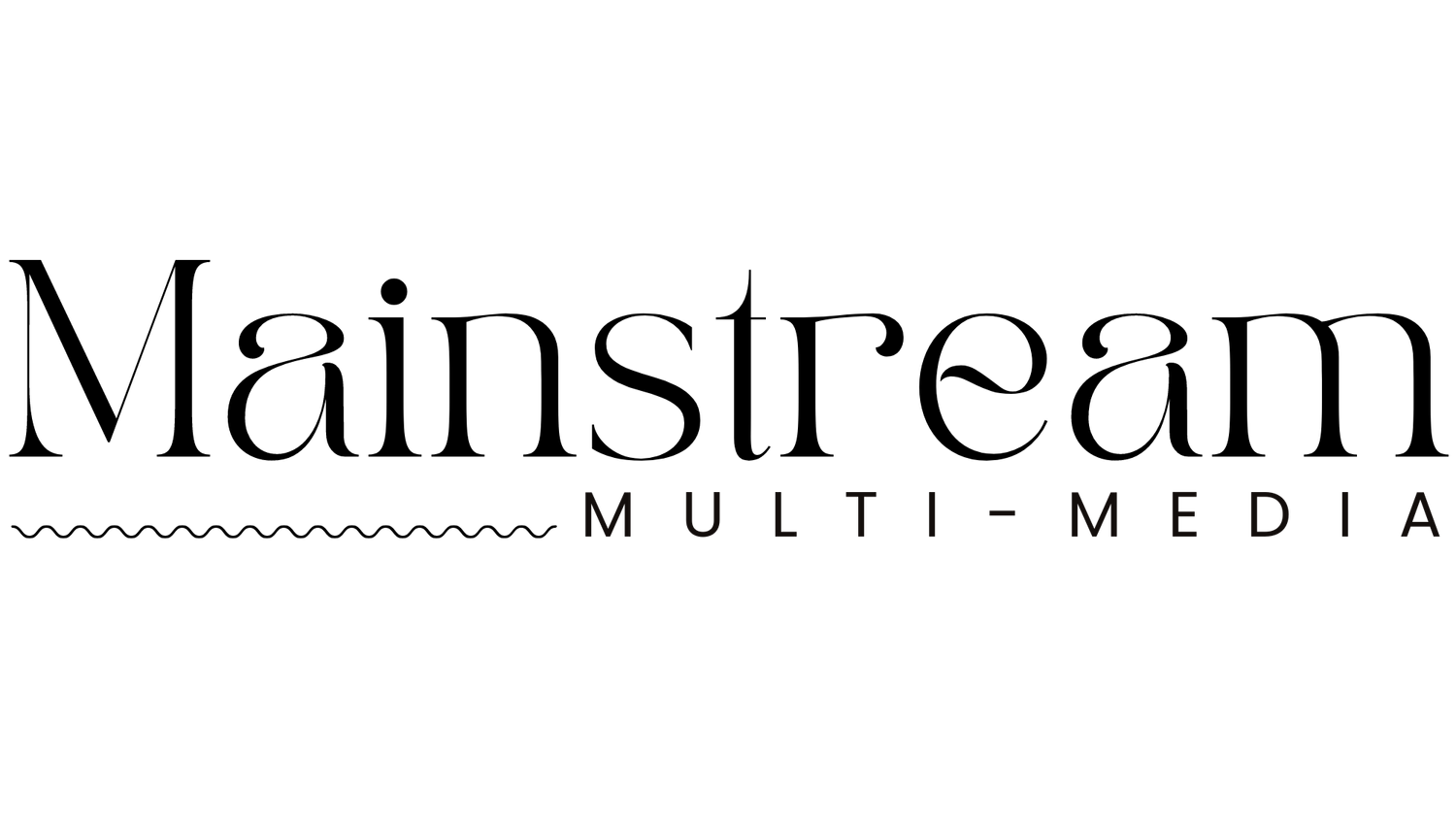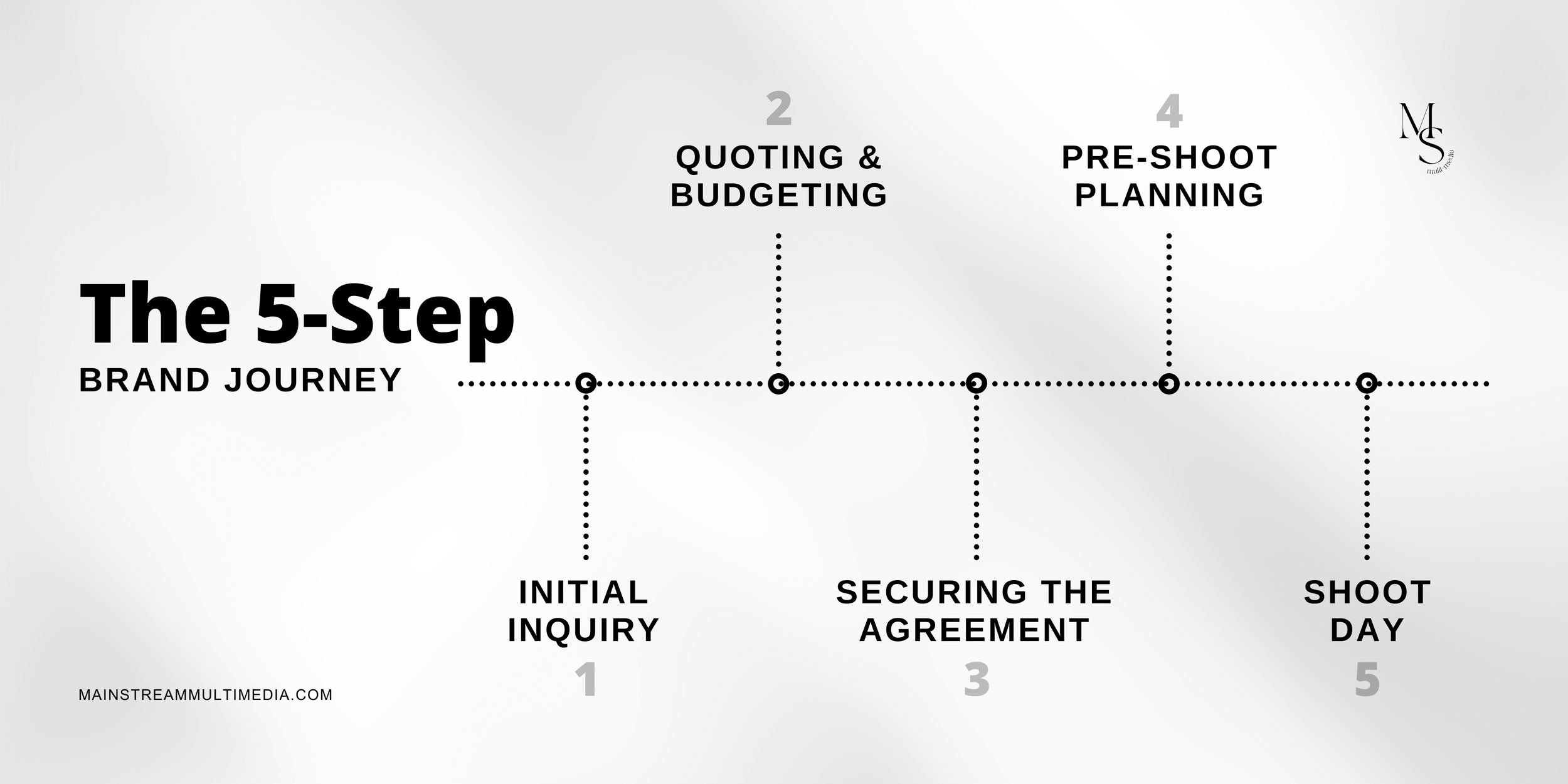The Photography Business Toolkit: Ultimate Guide to Managing Your Business
+Free Guide: Automate Your Client Workflow (at the bottom!)
Every photography project follows a similar flow, whether you’re shooting products for a local business or working with a major beauty company. Every brand, client, or project you take on will go through a predictable journey that consists of five core steps: Inquiry, pricing, agreement, planning, shooting, and editing (but we’re leaving this one out!).
Mastering these steps not only impresses your clients but also helps streamline your process, ensuring nothing falls through the cracks.
Step 1: Initial Inquiry – Create a Memorable First Impression
Your response to an initial inquiry sets the tone for the entire client relationship. This is your chance to make a lasting first impression. At this stage, clients are often comparing options, and a prompt, professional response can set you apart.
During this phase, gather the essential details—what type of shoot they need, their preferred timeline, and any specifics they’re looking for. Asking the right questions early on can help you understand the scope of the project and show the client that you’re organized and ready to help. Use this opportunity to not only respond to their inquiry but also to position yourself as the expert who can meet their needs.
Toolkit Recommendation #1: Client Welcome Packet
Start by sending a polished Welcome Packet that introduces you and outlines your photography process. A proper Welcome Packet Template is packed with everything a client needs to know to feel confident in choosing you. It lays out your services, pricing, processes, and expectations upfront, cutting down on back-and-forth questions and setting a professional tone from the get-go.
Here’s how this template benefits you at this stage:
Establishes Authority: When a client receives your packet, it’s a signal that you’re organized and experienced. They immediately understand that working with you is going to be smooth and professional.
Saves Time: You don’t have to manually explain the same things over and over. The Welcome Packet covers common questions and provides an overview of how you work, saving you tons of time.
Sets Expectations: The packet outlines everything from timelines to payment terms, so there are no surprises later in the project.
Step 2: Quoting & Budgeting – Establish Clear Expectations
Now that you understand the client’s needs, it’s time to send them a simple, clear quote. For this, we recommend creating an itemized list of your services. By breaking down the costs for each service, you not only help the client see the value in each aspect of your work, but you also open the door for potential upsells.
For example, itemizing your quote allows you to add value to small add-ons that the client requested- like hand modeling or faster turnaround times. This approach can increase the total project value with minimal additional effort on your end.
Toolkit Recommendation #2: Quote & Invoice Bundle
To help streamline this process, we recommend using a Quote & Invoice Bundle. It simplifies the process of creating professional, itemized quotes and invoices while ensuring all the essential details are included.
Here’s how this bundle benefits you:
Clear Communication: A well-organized, itemized quote shows your client exactly what they’re paying for, eliminating confusion and making negotiations easier.
Upselling Opportunities: By clearly listing small add-ons like quick turnaround times or hand modeling, you can easily increase the total value of your projects.
Step 3: Securing the Agreement – Protect Both You and Your Client
Once your quote is approved, the next critical step is making things official with a signed contract. This is where the project moves from a discussion to a formal agreement, providing legal protection for both you and your client. A well-written contract outlines payment terms, deliverables, timelines, and usage rights—essential elements that ensure everyone is on the same page.
Toolkit Recommendation #3: Photography Contract
To simplify this process, we highly recommend using a Product Photography Contract Template. This contract is specifically designed for photographers, covering everything from payment terms to rescheduling policies. It takes the guesswork out of what to include, so you can confidently move forward without worrying about potential disputes.
Here’s how this template benefits you:
Protects Your Business: The contract ensures both you and the client are legally protected. It covers important details like payment schedules, intellectual property rights, and scope of work, which prevents any misunderstandings.
Sets Clear Expectations: With a solid contract in place, both parties are aware of their responsibilities. This minimizes the risk of confusion about what’s included and what isn’t.
Professionalism: Sending over a contract shows that you take your business seriously. It elevates the trust clients have in you and assures them that they’re working with a professional.
Step 4: Pre-Shoot Planning – Set Yourself Up for Success
The pre-shoot planning phase is where all the magic happens behind the scenes. This is when you’ll collaborate with the client to iron out all the details before shoot day. Depending on the type of project, this could involve location scouting, sourcing props, or even coordinating with models and makeup artists.
A key part of any photography shoot is creating a detailed shot list. Having a clear plan not only keeps you organized on the day of the shoot but also helps ensure you deliver exactly what your client expects. Are there specific styles or angles they want? What is the overall mood or aesthetic they’re aiming for? The more detail you cover here, the smoother the shoot will go.
Toolkit Recommendation #4: Shot List Template
To streamline this phase, we recommend using a Shot List Template. This template helps you map out every shot ahead of time, so you’re prepared to capture all the important moments without missing a beat.
Here’s how this template benefits you:
Ensures Nothing Is Missed: By organizing every shot in advance, you avoid missing key images your client is expecting. This not only guarantees client satisfaction but also helps you manage time efficiently on shoot day.
Improves Creativity: Having a shot list in hand enhances your creativity by allowing you to plan out every logistical detail of your shot prior to being on set.
Saves Time: Our Shot List Template is easy to use and fully customizable, allowing you to quickly create a professional shot list that can be shared with clients, stylists, or other team members.
Step 5: Shoot Day – Deliver Beyond Expectations
When shoot day finally arrives, it’s your moment to bring the client’s vision to life. But the real key to a successful shoot lies in everything you’ve done up to this point.
By following the first four steps—responding professionally to inquiries, sending clear quotes, securing agreements with solid contracts, and meticulously planning your shots—you’ve laid the foundation for a seamless, stress-free day.
Additional Tips for Your Photography Business Kit
Your business toolkit doesn’t stop at templates and workflows. To truly build a photography business that runs smoothly and stands out to clients, consider adding these extra elements to your kit:
Automated Email Responses: Set up automated responses for client inquiries to ensure no potential lead goes unanswered. This simple automation keeps your communication prompt and professional.
Client Management Software: Use a client relationship management (CRM) tool, like Sprout Studio, to track leads, manage projects, and store contracts.
Branding Materials: Make sure your business has a strong visual identity. Create professional branding elements such as a logo, color palette, and consistent fonts that are reflected in all your documents, emails, and social media.
Social Media Templates: Streamline your social media presence with branded templates for Instagram, Pinterest, and X. Consistency on these platforms helps build credibility and attract more clients.
Post-Shoot Follow-Up System: After a successful shoot, don’t just deliver the images—create a follow-up system to request feedback, offer additional services, or ask for referrals.
The right tools and strategies can make all the difference in how smoothly your business runs, freeing you up to focus on what you do best—creating stunning photography. Remember, your goal is to build trust and deliver results that go beyond expectations!
BONUS Your Business Is Set Up. Now It's Time to Get Booked.
You know how to build a professional foundation — systems, templates, workflows — everything serious clients expect.
The next step?
Making sure those dream clients actually find you... and hire you.
The 5-Day Client Booking Blueprint shows you how to:
✅ Position your brand to stand out in a crowded market
✅ Create a portfolio that gets inquiries (not just likes)
✅ Pitch with confidence and convert leads into bookings
✅ Build a repeatable client booking process that grows with you
👉🏼 Start the 5-Day Blueprint Now
Professional systems impress clients. But great marketing brings them to your door.
FAQs
What is the most important part of the client journey in photography?
Every part of the client journey is crucial, but the initial inquiry sets the tone for the entire relationship. Making a great first impression builds trust and helps you stand out from the competition.
Why is itemizing a quote beneficial for photographers?
Itemizing a quote allows clients to see the value in each service you offer. It also opens opportunities to upsell additional services like hand modeling or quick turnaround times, increasing your project’s total value.
How can a photography contract protect both the photographer and the client?
A photography contract clearly defines payment terms, deliverables, and timelines, minimizing the chance of misunderstandings and ensuring both the photographer and client are legally protected throughout the project.
What is the purpose of a shot list for a photography shoot?
A shot list ensures that you capture every important moment during a shoot. It helps keep you organized, allows for creativity, and ensures you deliver exactly what the client expects.
How do I streamline my photography business to save time?
Using tools like welcome packets, itemized quotes, contracts, and shot lists can streamline your photography business.







Boost your holiday sales with photography that creates a buying environment. Learn how to capture the gift mindset and turn your visuals into conversions.